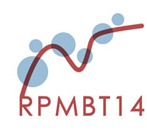| |
Proceedings
PROCEEDINGS OF THE 14TH INTERNATIONAL CONFERENCE
"RECENT PROGRESS IN MANY-BODY THEORIES"
Invited talks and selected contributed talks will be published by World
Scientific in a volume of the Series on Advances in Quantum Many-Body Theories,
edited by R. F. Bishop, C. E. Campbell, J. W. Clark and S. Fantoni. The editors
of the present volume are G. E. Astrakharchik, J. Boronat, and F. Mazzanti.
The expected length of the manuscript is 10 pages for invited talks and 4 pages
for contributed talks. We ask all the authors for preparing their manuscript
and send it to the email address rpmbt14.manuscript@upc.edu before (or, at least, during)
the Conference, July 16-20.
1. Deadlines and manuscript length.
Invited speakers are asked to write a 10-page manuscript. Authors of contributed
talks are asked to write a 4-page manuscript. Manuscripts should be sent to
rpmbt14.manuscript@upc.edu before the beginning of the Conference. The last date
for manuscript submission is during the conference July 16-20, 2007.
2. Sample files
Authors should use the World Scientific style/template document for LaTeX2e to
prepare the manuscripts. The LaTeX2e class file and the sample coded files can
be found here. Do "unzip sample.zip". Once unzipped successfully, you will find
the following files:
Filename |
Purpose |
procs-readme975x65 2e.pdf |
Preliminary guide |
procs-instruction975x65 2e.pdf |
General instructions for authors & Layout and Font Specification Guide |
sample.tex |
Sample file coded in LATEX2e to enable authors to use it as a template and for ready reference |
sample.pdf |
Style guide, PDF version of sample.tex |
sample.bib |
Sample BIBTeX database |
procs-fig1.eps
procs-fig2a.eps
procs-fig2b.eps |
Sample EPS file |
ws-procs975x65.cls |
Main class file |
ws-pro-sample.bst |
BIBTeX style file |
cite.sty |
Compressed, sorted lists of superscript numerical citations |
epsfsafe.tex |
EPS support file |
3. Bibliography and compiling LaTeX file
The sample LaTeX2e file uses bibliographic database
(to set style use \bibliographystyle{ws-procs975x65}).
The compilation order is the following:
- latex sample
- bibtex sample
- latex sample
- latex sample
Used in this way, BibTeX generates references in the correct style.
If BibTeX is not used authors should write references in the following way:
- authors
- ","
- journal / book title (italic)
- volume (bold)
- ","
- page
- year (in parenthesis)
- "."
N.B. The style reminds the one of Phys. Rev. journals with the exception
that journal name is written in italic.
An example:
1. B. W. Bestbury, J. Phys. A 36, 1947 (2003).
2. R. V. Churchill and J. W. Brown, Complex Variables and Applications,
5th edn. (McGraw-Hill, 1990).
4. Points to Remember
(a) Figures should not contain colors and are printed in black and white. No references to colors (red line, etc.) are allowed. Grayscale figures are permitted.
(b) Authors should provide a list of keywords that will be used in index of the book for referring to author's contribution.
(c) Please ensure quotation marks are paired correctly.
(d) Italicized words should not be done in TEX's mathmode as this will result in unusual character spacing. Use the proper control sequence like \it. Italic text should be terminated by an italic correction, i.e. {\it heavy quarks\/} unless the text in italics is immediately followed by a full stop (.) or comma (,).
(e) Use a hyphen (-) for compound words (e.g. 'two-dimensional'), an en-dash (--) to link numbers, nouns or names (e.g. 220--240 Volts, electron-positron collisions, Einstein-Rosen-Podolsky paradox), and an em-dash (---) to link sentences or clauses - this is what we would regard as a 'normal' dash.
(f) The standard abbreviations are:
Equation(s) - Eq./Eqs.
Figure(s) - Fig./Figs.
Reference(s) - Ref./Refs.
Section(s) - Sec./Secs.
Please spell in full if any of the above is the first word of the sentence. Also, use a fixed space " ~ " between the reference and identifiers (e.g. Fig.1), etc.
(g) The following Latin words are italized: a priori, in situ, et al., and so on.
5. Illustrations and Images
Please prepare all line drawings, halftones (gray scale) illustrations in high resolution.
Artwork Standards and Specifications
(a) 600 dpi for line drawings (black and white)
(b) 300 dpi for halftones (gray scale). Do not convert from color images as they reproduce very poorly.
(c) No color images are allowed.
(d) Ensure all labels/annotations are sharp and clear for reproduction. Easy-to-read fonts like Arial, Helvetica or Times Roman are recommended for labels.
6. Further Considerations
" Are your references in the correct format for the proceedings?
" Are all sources mentioned in the reference list quoted in the text, and vice versa?
" Has permission been obtained for the use of copyrighted material from other sources (including the Web)?
" Are your source files in a standard LATEX format?
" Are your graphics of a high-resolution (either TIF or EPS preferred)?
" All the citations that appear in the text appear in the reference list and vice versa
" All tables/figures have been cited in the text in numerical order
" All figures are enclosed and have captions
" Standard fonts have been used
" Charts, graphs and illustrations (line drawings) have been converted to encapsulated PostScript (preferred) at 600 dpi
" Photographs (half tone) with no labeling are supplied as TIFs at 300 dpi at their intended print size
" Combination figures have been converted to encapsulated PostScript (preferred) at 600 dpi
" Black and white images are saved in gray scale mode
" Figure files have been clearly named with a correct PC suffix (.eps for encapsulated PostScript; .tif for TIF)
7. Getting Help
Although effort has been put in to keep the document style easy to use and
provide a concise description of the most common aspects of style, it is of
course possible that authors encounter problems. Also authors might have
suggestions for improvement. In those cases they can email their comments
and suggestions to rpmbt14.manuscript@upc.edu.
|
|

